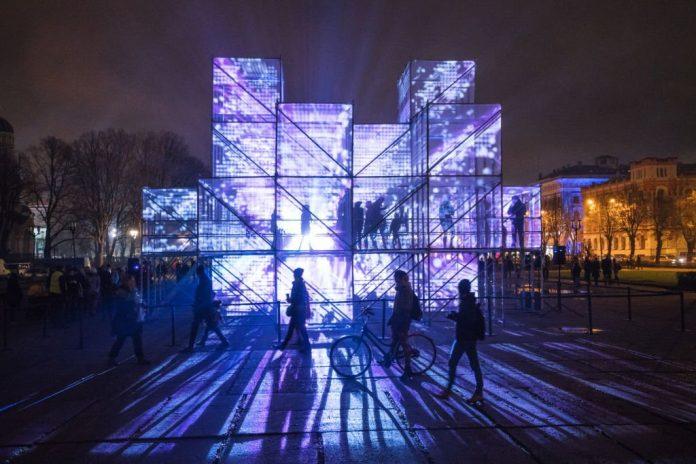Interactive light installations have become a powerful tool in transforming public spaces into captivating and immersive experiences. Their ability to engage and delight audiences has led to their widespread use in various settings, including concerts, festivals, art installations, and other public events. As creators and designers venture into the realm of interactive light installations for concerts, it is essential to understand the dos and don’ts to ensure the success of such projects.
In this comprehensive guide, we will explore the key considerations to keep in mind when designing interactive light installations for public spaces, with a particular focus on concerts and events.
Dos of Designing Interactive Light Installations:
Understand Your Audience:
Before diving into the design process, thoroughly understand the target audience for the interactive light installation. Consider their interests, demographics, and expectations to create an experience that resonates with them.
Conceptualize with Purpose:
Start the design process with a clear purpose or theme in mind. A well-defined concept will guide your artistic choices and help convey a cohesive message to the audience.
Collaborate with Experts:
Bring together a multidisciplinary team, including lighting designers, artists, and technicians, to harness their expertise and create a harmonious and technically sound installation.
Prioritize Safety:
Safety should be a paramount concern in designing interactive light installations for concerts and events. Use high-quality, durable materials and ensure that electrical components are well-insulated and protected.
Create Engaging Interactions:
Design the installation to encourage active participation from the audience. Incorporate various interactive elements such as motion sensors, touch-sensitive surfaces, or even audience-controlled interfaces.
Integrate with Sound and Music:
Consider how the interactive light installation can complement the music or performance taking place. Synchronize the lighting effects with the music to create a mesmerizing and synesthetic experience.
Test and Iterate:
Conduct thorough testing and iterate on the design as needed. Prototype the installation to observe how users interact with it and make adjustments based on their feedback.
Consider Accessibility:
Ensure that the interactive light installation is accessible to all individuals, including those with disabilities. Design interactions that are easy to use and understand for people with diverse abilities.
Focus on Scalability:
If the installation will be used in various events or spaces, design it with scalability in mind. Flexibility will allow for adaptation to different environments without compromising its effectiveness.
Don’ts of Designing Interactive Light Installations:
Overcomplicate User Interface:
Avoid making the user interface of the interactive light installation overly complex. Keep the interactions intuitive and straightforward to encourage maximum engagement from the audience.
Disregard Spatial Constraints:
Pay attention to the physical dimensions and constraints of the venue where the installation will be set up. Ensure that it fits seamlessly into the space without overwhelming the environment.
Neglect Lighting Techniques:
Light is a powerful tool for creating impactful interactive installations. Don’t underestimate the importance of lighting techniques such as color, intensity, and movement in enhancing the overall experience.
Exclude Clear Instructions:
Provide clear and concise instructions on how to interact with the installation. Ambiguity can lead to confusion and frustration among users, detracting from the overall experience.
Ignore Maintenance Needs:
Plan for regular maintenance to ensure the installation remains in top condition throughout its display period. A non-functional or poorly maintained installation can leave a negative impression on the audience.
Compromise Safety for Aesthetics:
While aesthetics are important, never compromise safety for visual appeal. Make sure that the installation is structurally stable and that all electrical components are safely secured.
Disregard Environmental Impact:
Be conscious of the installation’s environmental impact. Opt for energy-efficient lighting solutions and sustainable materials whenever possible to reduce its carbon footprint.
End Note:
Interactive light installations have the potential to transform concerts and events into unforgettable experiences for attendees. By following the dos and avoiding don’ts of designing such installations, creators can ensure that their projects are not only visually stunning but also safe, engaging, and accessible to all. As the popularity of interactive light installations continues to grow, their presence in public spaces, including concerts and events, will undoubtedly enhance the overall ambiance and create lasting memories for audiences worldwide.
In the realm of events and concerts, the versatility of interactive light installations opens up exciting possibilities for creating unique and immersive experiences. From dazzling visual displays synchronized with music to audience-driven interactive elements, these installations amplify the emotional impact of performances and enhance the connection between artists and their audiences. As the demand for interactive light installations for events continues to rise, designers and creators are inspired to push creative boundaries and use light as an art form to elevate the concert experience to new heights.
